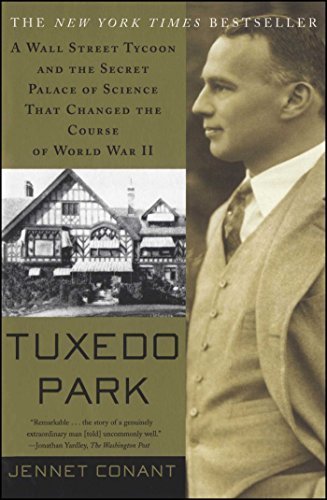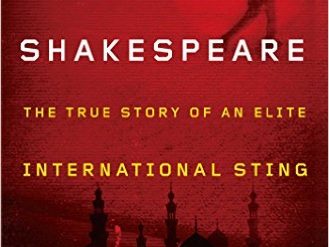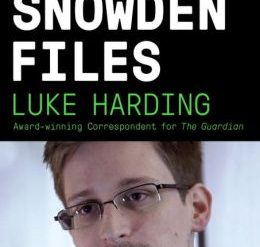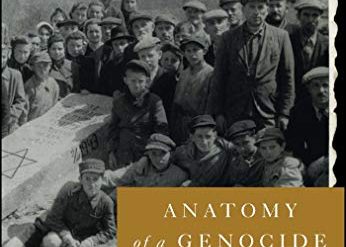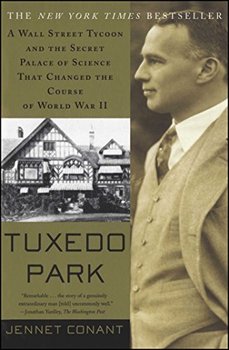
Radar helped win World War II, and one little-remembered man was the key to developing it.
He was a privileged young man, a product of Andover, Yale, and Harvard Law and a first cousin and protegé of Henry L. Stimson (who was variously Secretary of State and War under Presidents Herbert Hoover and Franklin Roosevelt). He made an immense fortune on Wall Street in the 1920s. But his first love was science. Even while helping structure the nation’s electric power industry, he established a lavish private laboratory that attracted leading scientists from all over the world.
Having cashed out of the market before the Crash in 1929, he used his wealth and connections to indulge his wide-ranging scientific interests and gain a following among the world’s leading physicists. And when World War II approached, he played a leading role in assembling the men and resources that produced radar and the atomic bomb in record time—arguably the two most significant inventions that enabled the Allied victory. Though he is little remembered today, it’s no exaggeration to say that Alfred Loomis (1887-1975) helped change the course of World War II. In fact, senior officials who worked with him during the war made exactly that point.
Tuxedo Park: A Wall Street Tycoon and the Secret Palace of Science that Changed the Course of World War II by Jennet Conant (2002) 352 pages ★★★★★
A Who’s Who of science
In Tuxedo Park, Jennet Conant‘s compelling biography of Loomis, you’ll meet a Who’s Who of the scientific establishment of the 1930s and 40s:
All these men—most of them Nobel Prizewinners—were among Alfred Loomis’ friends, collaborators, and beneficiaries of his philanthropy. At one time or another, and often repeatedly over the course of the years, he hosted them for extended periods at his lavishly equipped private scientific laboratory in Tuxedo Park, New York. But Loomis knew the other luminaries in the field, too, including Niels Bohr, Albert Einstein, Max Planck, and Werner Heisenberg. (All of them won the Nobel, too.)
The attraction for all these eminent men was, in part, the opportunity to rub shoulders with their peers, and with Loomis himself. But the facility at Tuxedo Park pulled strongly, too. “Whereas today physicists look forward to spending August studying at a school on Lake Como,” Conant writes, “in the 1930s the lucky few received an invitation to spend the summer at Tuxedo Park.”
A brilliant scientist and engineer—without credentials
Loomis helped achieve breakthroughs in several scientific fields:
- Loomis’ principal contribution to society was his work to spearhead the development of radar—and the industrial production that followed. By all accounts, radar was one of the most significant factors in the Allied victory in World War II.
- Through his close friendship with Ernest O. Lawrence, he was a factor in speeding the design of the atomic bomb as well.
- However, Loomis also played a significant role in other scientific advances of the 1930s, including electroencephalography, ultrasound for therapeutic and diagnostic purposes, and the precise determination of time through the use of quartz and other advanced clocks.
For a man with a law degree and a career on Wall Street but no credentials in science, these were remarkable accomplishments. In fact, they would have been extraordinary for any scientist; few ever manage to roam outside their specialties. Loomis won honorary doctorates as a result and was admitted to the National Academy of Sciences.
Radar helped win World War II
Loomis’ most significant contribution lay in the field of radar. Although he also devoted a great deal of time to working with his friend Ernest O. Lawrence on nuclear physics research, he devoted most of his considerable energies to the development of radar during the years of World War II. However, radar was not a single technology but many: as Conant notes, there are “over a hundred distinct radar systems.” Loomis was instrumental as an administrator, and often as an inventor, in helping bring many of them to life, including:
- Radar in ground installations that was used to detect incoming airplanes helped the RAF shoot down hundreds of incoming Luftwaffe bombers.
- Installed on ships at sea, radar that helped the British and American navies locate and destroy German U-boats and turn the tide in the Battle of the Atlantic.
- Radar built into British and American warplanes which allowed them to land in bad weather, saving countless lives like those lost in previous years.
- LORAN developed for long-range navigation that helped the Allies conduct anti-submarine warfare.
- Specialty radar installed along the coasts of the Atlantic and Pacific Oceans which provided early warning at great distance about the movement of hostile forces toward American shores.
Conant compares Loomis’ efforts, first at Tuxedo Park and later at the MIT Radiation Laboratory that he helped establish, with the effort to build the atomic bomb. “The Manhattan Project became world famous,” she writes. “The Tizard Mission“—the British team who visited the US in September 1940 to share scientific secrets, including its advanced work on radar—”faded into obscurity. Only the Rad Lab veterans knew better, knew that if radar had not kept the Germans from defeating England, the war might have been over before America entered the contest.” As Lee DuBridge, one of the physicists involved at the Rad Lab (and later the president of CalTech) said, “Radar won the war; the atom bomb ended it.”
For further reading
For an entirely different perspective on the development of radar in the war, see Churchill’s Shadow Raiders: The Race to Develop Radar, WWII’s Invisible Secret Weapon by Damien Lewis (How German radar technology helped Britain win World War II).
Science and scientists were central to the Allied victory in World War II. Other books that highlight their accomplishments include:
- Hedy’s Folly: The Life and Breakthrough Inventions of Hedy Lamarr, the Most Beautiful Woman in the World, by Richard Rhodes (The astonishing story of Hedy Lamarr, Hollywood star and inventor);
- Operation Chastise: The RAF’s Most Brilliant Attack of World War II by Max Hastings (Bomber Command’s most successful attack on Nazi Germany was not on its cities);
- and, in significant part, another of Hastings’s histories, The Secret War: Spies, Ciphers, and Guerrillas, 1939-1945 (A revisionist history of intelligence in World War II).
Similarly, The Emperor’s Codes: The Thrilling Story of the Allied Code Breakers Who Turned the Tide of World War II by Michael Smith spotlights the work of Allied code-breakers. I’ve reviewed it at Did the British crack the World War II Japanese codes?
You might also be interested in:
- 5 top nonfiction books about World War II
- The 10 best novels about World War II
- 20 top nonfiction books about history
- Top 20 popular books for understanding American history
- Great biographies I’ve reviewed: my 10 favorites
And you can always find my most popular reviews, and the most recent ones, plus a guide to this whole site, on the Home Page.

